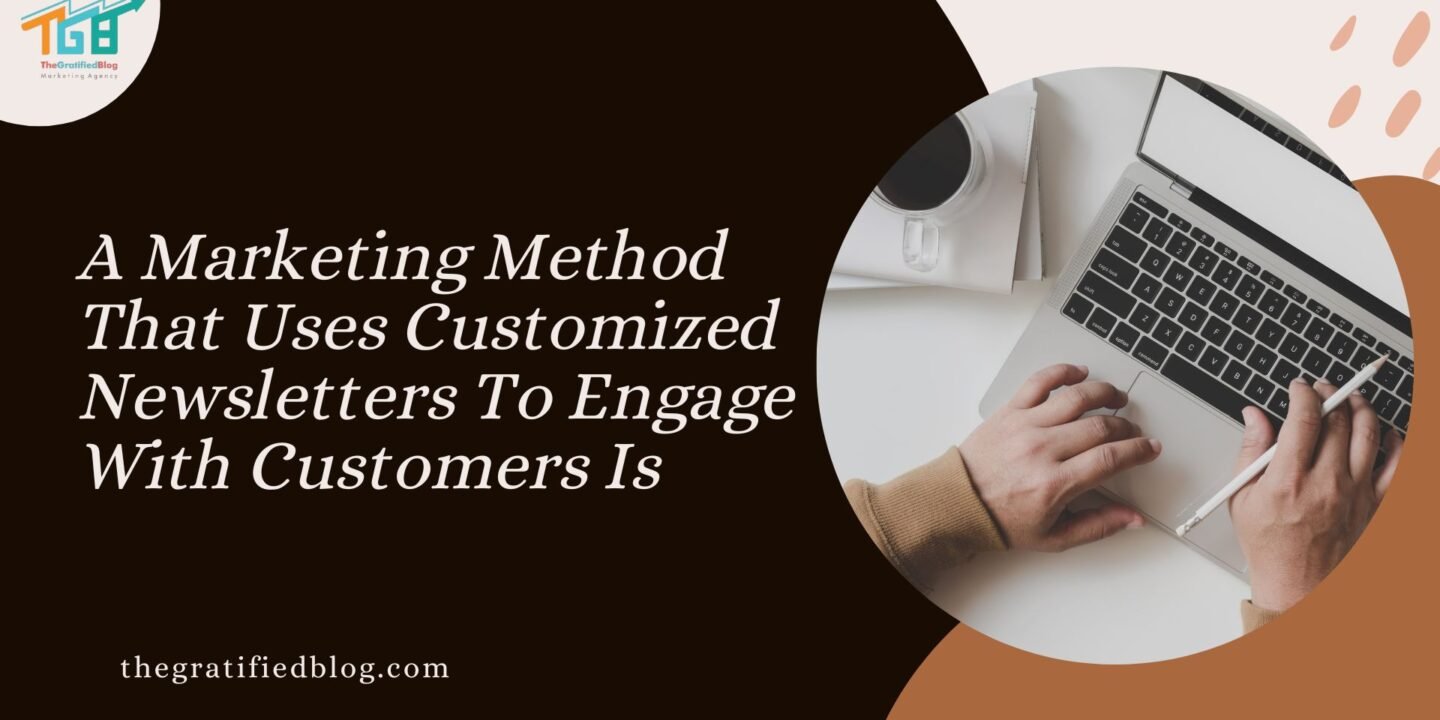
Customized newsletters as a marketing method to engage with customers have become increasingly popular in recent years. This method allows businesses to deliver personalized content directly to their target audience, increasing customer engagement and ultimately driving sales. By tailoring the content of newsletters to the specific interests and needs of individual customers, businesses can create a more personalized and impactful marketing experience. This article will explore the benefits of using customized newsletters as a marketing method and provide tips for creating compelling and engaging content.
A Marketing Method That Uses Customized Newsletters To Engage With Customers Is
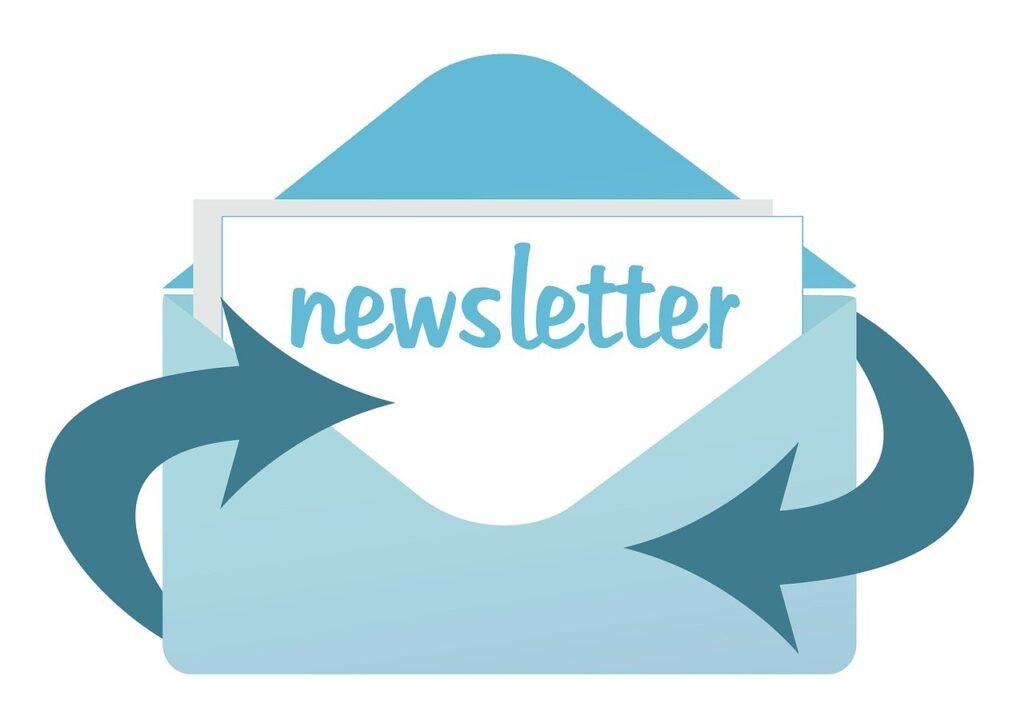
A marketing method that uses customized newsletters to engage with customers is Email Marketing
Email marketing involves sending newsletters, promotional offers, updates, and other relevant content to subscribers’ email addresses. These emails are typically tailored to specific audience segments based on their interests, behavior, purchase history, or demographics. Businesses can implement various email marketing types to achieve different objectives, such as welcome emails, promotional emails, newsletter campaigns, drip campaigns, abandoned cart emails, and transactional emails.
Customized newsletters allow businesses to maintain regular communication with their audience, build brand loyalty, provide valuable information, promote products or services, and drive traffic to their website or other online platforms.
Advantages of Email Marketing: Marketing of emails advantages offer several benefits, including cost-effectiveness, targeted messaging, measurable results, automation capabilities, and increased brand awareness and engagement.
Disadvantages of Email Marketing: Marketing of emails disadvantages, such as the potential for emails to be marked as spam, low open and click-through rates, compliance challenges with regulations like the CAN-SPAM Act and GDPR, and the need for ongoing optimization and testing to maintain effectiveness.
Key Elements Of Successful Email Marketing Include
Segmentation
Dividing the subscriber list into segments based on various criteria such as demographics, purchase history, engagement level, etc.
Personalization
Personalization involves customizing newsletter content to make it relevant and engaging for each audience segment. Examples include addressing subscribers by name, recommending products based on past purchases, or sending targeted promotions.
Compelling Content And Consistency
Creating high-quality, valuable content that resonates with the target audience and encourages them to take action, whether purchasing, visiting the website, or sharing the content with others.
Maintaining a regular schedule for sending newsletters to keep subscribers engaged and interested in the brand.
Analytics and Optimization
Tracking key metrics such as open rates, click-through rates, conversion rates, etc., and using this data to optimize future email campaigns for better results.
The Power Of Customized Newsletters In Marketing
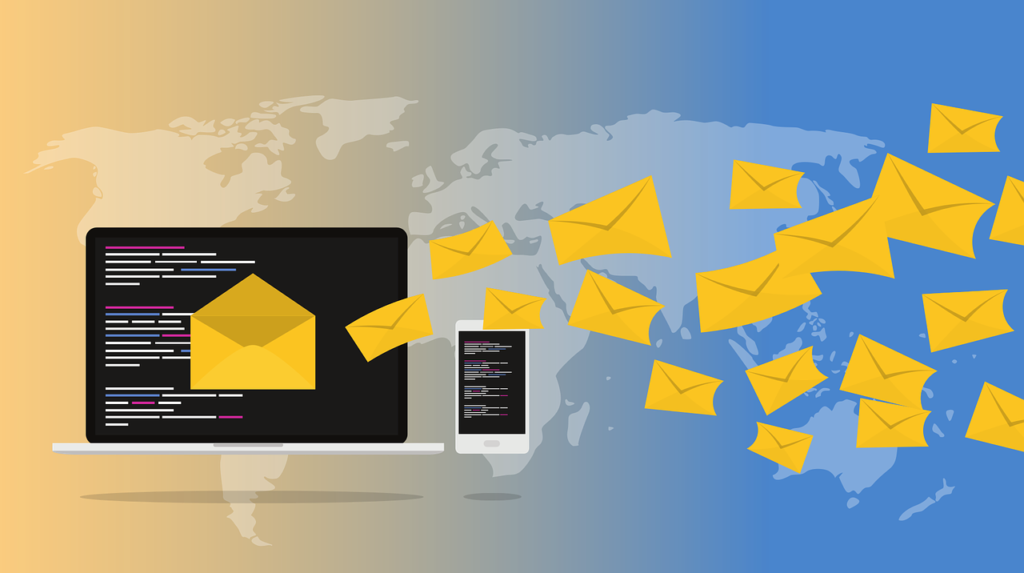
Customized newsletters have proven to be a potent tool when it comes to marketing. Businesses can create a deeper connection with their customers by personalizing the content. This connection leads to increased engagement and, ultimately, higher sales.
When a newsletter speaks directly to the interests and needs of an individual customer, it establishes trust and credibility. Customers feel understood and valued, which fosters loyalty and brand advocacy. Moreover, customized newsletters allow businesses to tailor their messaging based on customer behaviors and preferences, further enhancing their marketing efforts.
In addition to fostering customer loyalty, customized newsletters allow businesses to showcase their expertise and industry knowledge. By offering valuable insights and exclusive content, businesses can position themselves as thought leaders and build a reputation for excellence in their field.
How Personalizing Newsletters Can Engage Customers
Customizing newsletters is an effective way to engage customers and keep them interested in your brand. By tailoring the content to their interests and needs, you show that you understand and value them as individuals. This personalized approach fosters loyalty and increases the chances of higher sales.
To effectively personalize newsletters, consider collecting data on customer behaviors and preferences. This will allow you to deliver targeted content that resonates with each customer. Additionally, segmenting your audience based on specific criteria can help you create more relevant newsletters and generate higher engagement rates.
Here are several ways personalization can help engage customers in newsletters:
Addressing Recipients by Name
Using a subscriber’s name in the newsletter’s subject line or salutation can grab their attention and make the communication feel more personal. This simple touch can increase open rates and engagement.
Tailoring Content to Interests and Preferences
Analyzing subscriber data, such as past purchases, browsing history, and interaction with previous newsletters, allows businesses to understand individual preferences and interests. By segmenting the audience and delivering content that aligns with these preferences, businesses can increase relevance and engagement.
Recommendations Based on Past Behavior
Utilizing data on past purchases or interactions, businesses can personalize newsletters by recommending products or content that align with the recipient’s interests. This personalized approach increases the likelihood of the recipient engaging with the recommended items.
Exclusive Offers and Promotions
Providing exclusive offers or promotions tailored to individual customers can be a powerful way to encourage engagement. By understanding customer preferences and purchase history, businesses can offer discounts or incentives on products or services likely to resonate with the recipient.
Dynamic Content
Including dynamic content blocks within newsletters allows businesses to customize the content based on recipient attributes or behavior. For example, displaying different product recommendations based on the recipient’s past purchases or showing localized promotions based on the recipient’s location can enhance engagement.
Event-Based Messaging
Sending personalized messages based on specific events or milestones, such as birthdays, anniversaries, or past purchase anniversaries, demonstrates that businesses value their customers and can help foster a stronger connection.
A/B Testing and Optimization
Continuously testing different personalization strategies, subject lines, content formats, and calls-to-action allows businesses to identify what resonates best with their audience and optimize future newsletter campaigns for maximum engagement.
Responsive Design and Mobile Optimization
Optimizing newsletters for various devices and screen sizes, including mobile devices, ensures that recipients can easily engage with the content regardless of the device they are using.
Furthermore, offering valuable insights and exclusive content in your newsletters is essential. By positioning yourself as a thought leader and providing helpful information, you establish yourself as an authority in your industry. This can further enhance engagement and build trust with your customers.
Benefits Of Using Customized Newsletters As A Marketing Method

Using customized newsletters as a marketing method offers several significant benefits for businesses aiming to engage with their audience effectively. Here are some key advantages:
Personalized Communication: Customized newsletters allow businesses to tailor content according to individual subscribers’ preferences, interests, and behaviors. By addressing subscribers by name, recommending products based on past purchases, or sending targeted promotions, businesses can create a more personalized and relevant experience for their audience.
Increased Engagement: Personalized content tends to resonate better with recipients, leading to higher open rates, click-through rates, and overall engagement. When subscribers feel that the newsletter’s content is specifically curated for them, they are likelier to pay attention to the message and take the desired action, such as purchasing or visiting the website.
Building Customer Loyalty: Customized newsletters enable businesses to foster stronger relationships with their audience by consistently delivering valuable and relevant content. Businesses can enhance customer loyalty and encourage repeat purchases by providing subscribers with helpful information, exclusive offers, and personalized recommendations.
Segmentation and Targeting: Customized newsletters allow businesses to segment their audience based on various criteria, such as demographics, purchase history, browsing behavior, and engagement level. By segmenting their subscriber list, businesses can send targeted messages to specific groups of subscribers, ensuring that each recipient receives content that is most relevant to them.
Driving Conversions: Customized newsletters can be an effective tool for driving conversions and achieving marketing objectives. Whether the goal is to promote a new product, drive traffic to the website, or increase sales, businesses can use personalized content and targeted offers to encourage subscribers to take action.
Measurable Results: With email marketing platforms, businesses can track various metrics such as open rates, click-through rates, conversion rates, and revenue generated from newsletter campaigns. By analyzing these metrics, businesses can gain valuable insights into the effectiveness of their campaigns and make data-driven decisions to optimize future efforts.
Cost-Effective Marketing: Compared to traditional forms of marketing, such as print advertising or direct mail, customized newsletters can be produced and distributed at a fraction of the cost. This makes it a cost-effective option for businesses of all sizes to reach their target audience and drive engagement.
The benefits of using customized newsletters as a marketing method lie in their ability to deliver personalized, relevant, and targeted content to subscribers, thereby driving engagement, building loyalty, and ultimately driving business growth.
Best Practices For Creating Engaging Customized Newsletters
Now that we understand the benefits of using customized newsletters as a marketing method, we must explore the best practices for creating engaging newsletters that genuinely resonate with your audience.
- Segment Your Audience: Start by grouping your customers based on their demographics, interests, buying behavior, and other relevant data. This segmentation allows you to send personalized content to specific segments, increasing the relevance and effectiveness of your newsletters.
- Craft Compelling Subject Lines: The subject line is the first thing your subscribers see, so make sure it grabs their attention. Use enticing language, hint about the content inside, and keep it concise yet informative.
- Tailor Content to Your Audience’s Needs: Create content that addresses your audience’s pain points, challenges, and interests. Provide value by sharing informative articles, industry insights, product updates, and exclusive offers that align with their preferences.
- Use Eye-catching Designs: A visually appealing newsletter design can significantly impact engagement. Ensure your design is aesthetically pleasing, easy to read, and reflects your brand’s visual identity. Use images, colors, and fonts that align with your brand’s style and tone.
- Include Clear Call-to-Action: Every newsletter should have a clear call to action that encourages readers to take the desired action, whether visiting your website, purchasing, or signing up for an event. Use compelling language and create a sense of urgency to prompt immediate action.
By implementing these best practices, you can create customized newsletters that engage your audience, strengthen relationships, and drive valuable results for your business.
Measuring The Success Of Your Customized Newsletter Campaign
After implementing the best practices mentioned earlier, measuring the success of your customized newsletter campaigns is crucial. By tracking key metrics, you can gain valuable insights into the effectiveness of your efforts and make data-driven decisions to optimize future campaigns.
Start by tracking email open rates, which indicate how many subscribers are opening and viewing your newsletters. A high open rate suggests that your subject lines are compelling and enticing enough to grab your audience’s attention.
Next, analyze click-through rates (CTR) to determine how many subscribers click on your newsletters’ links. A high CTR indicates that your content is relevant and engaging, driving readers to take further action.
To measure conversion rates, track the number of subscribers who complete the desired action, whether it’s making a purchase, signing up for an event, or subscribing to a premium service. This metric directly reflects the effectiveness of your call-to-action and overall newsletter strategy.
Additionally, monitoring the unsubscribe rate is essential. While an average of a small percentage of unsubscribes is small, a significant increase may indicate that your content or frequency needs to meet your audience’s expectations.
Finally, gather feedback through surveys or monitoring social media mentions to understand how your audience perceives your newsletters. This qualitative data can provide valuable insights into what works well and areas for improvement.
By continuously measuring these metrics and making necessary adjustments, you can ensure that your customized newsletter campaigns drive tangible results and effectively engage your customers.
Frequently Asked Questions
Q1. Why are customized newsletters effective for marketing purposes?
Ans. Customized newsletters are effective because they deliver relevant and personalized content directly to subscribers’ inboxes, increasing engagement and driving conversions. Businesses can foster stronger relationships and encourage repeat purchases by addressing subscribers’ specific needs and interests.
Q2. How do businesses personalize newsletters for their audience?
Ans. Businesses personalize newsletters by leveraging subscriber data such as purchase history, browsing behavior, demographics, and preferences. They use segmentation and targeting techniques to tailor content, product recommendations, and promotions to specific audience segments.
Q3. What types of content can be included in customized newsletters?
Ans. Customized newsletters can include various content such as product recommendations, promotional offers, blog posts, industry news, how-to guides, customer testimonials, and event announcements. The key is to provide valuable and relevant content that resonates with subscribers.
Q4. How can businesses measure the effectiveness of customized newsletters?
Ans. Businesses can measure the effectiveness of customized newsletters by tracking key metrics such as open rates, click-through rates, conversion rates, and revenue generated from newsletter campaigns. They can also conduct A/B testing to optimize subject lines, content, and calls to action.
Conclusion
In conclusion, customized newsletters can be a powerful marketing method to engage Youkey metrics; you can optimize your campaigns and drive by implementing best practices and tracking key metrics’ tangible results. Monitoring email open rates, click-through rates, conversion rates, and unsubscribe rates will provide valuable insights into the effectiveness of your strategy. Gathering feedback through surveys and social media mentions will further deepen your understanding of your audience’s perception. You can ensure that your customized newsletters effectively engage your customers by continuously measuring these metrics and making necessary adjustments.


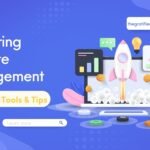




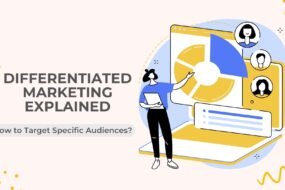
No Comments